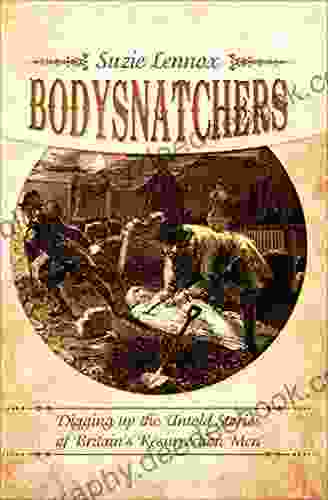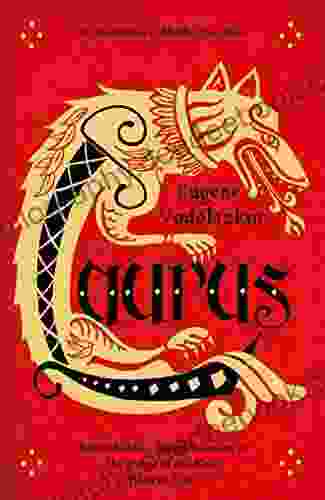The Guitarist's Music Theory: The Most Useful Guitar Music Theory

##
Learning music theory can help guitarists improve their playing in many ways. It can help them understand the structure of music, learn how to improvise, and write their own songs. However, there are many different aspects of music theory, and it can be difficult to know where to start.
4.5 out of 5
| Language | : | English |
| File size | : | 3876 KB |
| Print length | : | 76 pages |
| Lending | : | Enabled |
This article will provide an overview of the most useful music theory concepts for guitarists. We'll start with the basics of music theory, such as notes, intervals, and chords. Then, we'll move on to more advanced concepts, such as scales, modes, and harmony.
## Notes
Notes are the building blocks of music. They are the individual sounds that we hear when we listen to a song. There are 12 notes in the Western musical system: A, A#, B, C, C#, D, D#, E, F, F#, G, and G#.
Notes can be represented on a musical staff. The staff consists of five lines and four spaces. Each line and space represents a different note. The notes are arranged from low to high, with the lowest note on and the highest note on the top line.
Here is a diagram of a musical staff:
|-----|-----|-----|-----|-----| | G2 | F2 | E2 | D2 | C2 | |-----|-----|-----|-----|-----| | B1 | A1 | G1 | F1 | E1 | |-----|-----|-----|-----|-----| | D1 | C1 | B | A | G | |-----|-----|-----|-----|-----| | F | E | D | C | B | |-----|-----|-----|-----|-----| | A | G | F# | E | D | |-----|-----|-----|-----|-----|## Intervals
Intervals are the distance between two notes. They are measured in half steps. A half step is the smallest interval between two notes. There are 12 half steps in an octave.
Intervals can be classified as major, minor, perfect, augmented, or diminished. Major intervals are two half steps wider than minor intervals. Perfect intervals are three half steps wider than major intervals. Augmented intervals are one half step wider than perfect intervals. Diminished intervals are one half step narrower than minor intervals.
Here is a table of the different types of intervals:
| Interval | Half Steps | Quality | |---|---|---| | Minor Second | 1 | Minor | | Major Second | 2 | Major | | Minor Third | 3 | Minor | | Major Third | 4 | Major | | Perfect Fourth | 5 | Perfect | | Augmented Fourth | 6 | Augmented | | Perfect Fifth | 7 | Perfect | | Minor Sixth | 8 | Minor | | Major Sixth | 9 | Major | | Minor Seventh | 10 | Minor | | Major Seventh | 11 | Major | | Perfect Octave | 12 | Perfect |
## Chords
Chords are groups of three or more notes played together. They are the foundation of most music. Chords can be used to create harmony, rhythm, and melody.
There are many different types of chords. The most common types of chords are major chords, minor chords, and seventh chords. Major chords have a happy and uplifting sound. Minor chords have a sad and somber sound. Seventh chords have a more complex and sophisticated sound.
Here are some examples of common chords:
| Chord | Notes | Quality | |---|---|---| | C Major | C, E, G | Major | | C Minor | C, Eb, G | Minor | | C7 | C, E, G, Bb | Seventh |
## Scales
Scales are sets of notes that are arranged in ascending or descending order. They are used to create melodies and solos. There are many different types of scales, but the most common types of scales are major scales, minor scales, and pentatonic scales.
Major scales have a happy and uplifting sound. Minor scales have a sad and somber sound. Pentatonic scales are five-note scales that are often used in blues and rock music.
Here are some examples of common scales:
| Scale | Notes | Quality | |---|---|---| | C Major | C, D, E, F, G, A, B | Major | | C Minor | C, D, Eb, F, G, Ab, Bb | Minor | | C Pentatonic | C, D, E, G, A | Pentatonic |
## Modes
Modes are different types of scales that share the same root note. There are seven modes: Ionian, Dorian, Phrygian, Lydian, Mixolydian, Aeolian, and Locrian. Each mode has its own unique sound and feel.
The Ionian mode is the major scale. The Dorian mode is similar to the minor scale, but it has a more upbeat and hopeful sound. The Phrygian mode has a dark and mysterious sound. The Lydian mode has a bright and airy sound. The Mixolydian mode is similar to the major scale, but it has a more bluesy sound. The Aeolian mode is the minor scale. The Locrian mode is the most dissonant of the seven modes.
Here are some examples of common modes:
| Mode | Notes | Quality | |---|---|---| | C Ionian | C, D, E, F, G, A, B | Major | | C Dorian | C, D, Eb, F, G, Ab, Bb | Dorian | | C Phrygian | C, Db, Eb, F, G, Ab, Bb | Phrygian | | C Lydian | C, D, E, F#, G, A, B | Lydian | | C Mixolydian | C, D, E, F, G, A, Bb | Mixolydian | | C Aeolian | C, D, Eb, F, G, Ab, Bb | Aeolian | | C Locrian | C, Db, Eb, F, Gb, Ab, Bb | Locrian |
## Harmony
Harmony is the combination of different notes that are played together. It is what gives music its richness and depth. There are many different types of harmony, but the most common types of harmony are consonance and dissonance.
Consonance is the combination of notes that sound pleasing together. Dissonance is the combination of notes that sound harsh or unpleasant together. Consonance is often used to create a sense of stability and rest, while dissonance is often used to create a sense of tension and excitement.
Here are some examples of common consonant and dissonant intervals:
| Interval | Quality | |---|---| | Perfect Fifth | Consonant | | Major Third | Consonant | | Minor Seventh | Dissonant | | Augmented Second | Dissonant |
##
Music theory is a vast and complex subject, but it is also a very rewarding one. By learning music theory, guitarists can improve their playing in many ways. They can learn how to understand the structure of music, learn how to improvise, and write their own songs.
I hope this article has given you a good overview of the most useful music theory concepts for guitarists. If you are interested in learning more about music theory, there are many resources available online and in libraries.
## Further Reading
* [Music Theory for Guitarists](https://www.guitarplayer.com/lessons/1591/music-theory-for-guitar-part-1/35797) * [The Complete Idiot's Guide to Music Theory](https://www.amazon.com/Complete-Idiots-Guide-Music-Theory/dp/1592571409) * [Harmony for Guitarists](https://www.amazon.com/Harmony-Guitarists-Ted-Greene/dp/082560205X)
## Image Alt Attributes
* [Diagram of a musical staff](https://upload.wikimedia.org
4.5 out of 5
| Language | : | English |
| File size | : | 3876 KB |
| Print length | : | 76 pages |
| Lending | : | Enabled |
Do you want to contribute by writing guest posts on this blog?
Please contact us and send us a resume of previous articles that you have written.
 Novel
Novel Page
Page Chapter
Chapter Text
Text Genre
Genre Library
Library E-book
E-book Magazine
Magazine Newspaper
Newspaper Paragraph
Paragraph Sentence
Sentence Bookmark
Bookmark Bibliography
Bibliography Foreword
Foreword Footnote
Footnote Classics
Classics Narrative
Narrative Biography
Biography Memoir
Memoir Encyclopedia
Encyclopedia Dictionary
Dictionary Thesaurus
Thesaurus Narrator
Narrator Resolution
Resolution Catalog
Catalog Card Catalog
Card Catalog Borrowing
Borrowing Stacks
Stacks Archives
Archives Research
Research Reserve
Reserve Academic
Academic Journals
Journals Special Collections
Special Collections Literacy
Literacy Thesis
Thesis Storytelling
Storytelling Awards
Awards Theory
Theory Textbooks
Textbooks Kamel Daoud
Kamel Daoud Dix Bruce
Dix Bruce Tobias Zoporowski
Tobias Zoporowski Leslie Bulion
Leslie Bulion Pamela S Karlan
Pamela S Karlan Brenda Bobby
Brenda Bobby Kate Bromley
Kate Bromley Marina Lewycka
Marina Lewycka Kyounghoon Lee
Kyounghoon Lee Vincent E Henry
Vincent E Henry William J Baumol
William J Baumol Audrey Shulman
Audrey Shulman Bob Greene
Bob Greene Robert Rothman
Robert Rothman Kai Siedenburg
Kai Siedenburg T L Sanders
T L Sanders Mara Rockliff
Mara Rockliff C J Petit
C J Petit M M Chouinard
M M Chouinard M I Hattersley
M I Hattersley
Light bulbAdvertise smarter! Our strategic ad space ensures maximum exposure. Reserve your spot today!

 David Peterson11 Guitar Techniques Every Rock And Blues Guitarist Must Know With 125 Licks
David Peterson11 Guitar Techniques Every Rock And Blues Guitarist Must Know With 125 Licks
 Chadwick PowellThe Cambridge Introduction to Milton: A Comprehensive Guide to the Life,...
Chadwick PowellThe Cambridge Introduction to Milton: A Comprehensive Guide to the Life,... Harry CookFollow ·17.8k
Harry CookFollow ·17.8k Ernesto SabatoFollow ·10.8k
Ernesto SabatoFollow ·10.8k Stuart BlairFollow ·2.5k
Stuart BlairFollow ·2.5k Chad PriceFollow ·10.7k
Chad PriceFollow ·10.7k Eugene ScottFollow ·4.6k
Eugene ScottFollow ·4.6k Shane BlairFollow ·3.1k
Shane BlairFollow ·3.1k Edward BellFollow ·11.1k
Edward BellFollow ·11.1k Bob CooperFollow ·2.2k
Bob CooperFollow ·2.2k

 Braden Ward
Braden WardFeminism's Forgotten Fight: The Ongoing Battle for...
The feminist movement has historically...

 Julio Cortázar
Julio CortázarBlue Heaven Black Night: A Literary Journey Through Love,...
In the realm of...

 Eddie Bell
Eddie BellA Journey Through Time: Exploring the Enchanting World of...
The vibrant tapestry of New...

 Lawrence Bell
Lawrence BellValiance Dragon Soul Press Anthology: A Literary Odyssey...
Step into a realm where...

 Aron Cox
Aron CoxEmbark on a Creative Odyssey with Jean Leinhauser's "101...
Unveil a Kaleidoscope of...
4.5 out of 5
| Language | : | English |
| File size | : | 3876 KB |
| Print length | : | 76 pages |
| Lending | : | Enabled |










